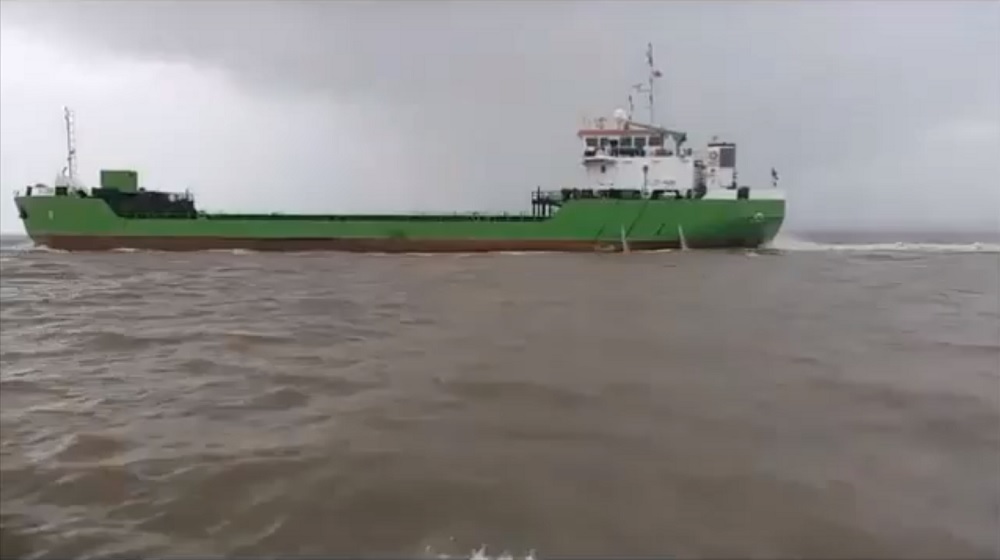Cross-channel calls for independent review into nuclear plant mud dump plans

Campaigners on both sides of the Bristol Channel have called for a full independent review into proposals to dump mud from the construction of a nuclear power plant in the sea off the coast of Cardiff, following the announcement that a new dumping site off the Somerset coast is also being considered.
Despite public opposition, in 2018 the Welsh Government permitted EDF to dump large quantities of mud dredged from construction of the new Hinkley C nuclear power plant at the Cardiff Deep Grounds inshore disposal site.
EDF insisted the site- only two miles from Cardiff Bay – was the only suitable site available in the Bristol Channel.
Last February EDF Energy applied to National Resources Wales for a licence to dump a further 800,0000 tonnes of mud dredged as part of building work for the new plant being built on the site of the disused Hinkley Point A facility.
A petition against the latest proposals received over 10,000 signatures and triggered a debate in the Senedd in October.
Earlier this month EDF announced its intention to apply to the Marine Management Organisation (MMO) for a license to dump at Portishead, while also making a further application to dump at the Cardiff site. No reason has been given by EDF for the Portishead proposal.
In a joint statement issued with Stop Hinkley and the Geiger Bay campaign, UK & Ireland Nuclear Free Local Authorities Steering Committee Chair, Councillor David Blackburn said: “NFLA was surprised to hear that EDF are now seeking to look at dumping mud from the Hinkley Point site off the Somerset coast in addition to continuing to look to dump off the south Wales coast.
‘Safety’
“The determined campaign against dumping at the Cardiff Deep Grounds may well be a reason behind this. Dumping the materials at the Portishead site still raises the question over what are the environmental, health and safety issues with dumping large amounts of material containing low levels of radiation off the Welsh and Somerset coast.
“We call for a full independent review of this application and a publication of the Welsh Government’s independent panel report looking into these matters.”
Historically the Portishead site was always used for the disposal of port and harbour navigation channel dredging and there is no evidence that it was ever used for the disposal of more controversial wastes. According to the MMO, the site has been disused for some years but, is still “open” for disposal permit applications.
It has since emerged that, in the run up to their first dump at the Cardiff Grounds, EDF had rejected a proposal from the Environment Agency to use a proposed deep water offshore disposal site at the Holms Deep area near the centre of the Bristol Channel. No reason has been given for the rejection of the Environment Agency offer.
Plutonium
EDF claim that the Bridgewater Bay sediment is “not radioactive under law”, but campaigning groups point out that the UK Government’s official radioactivity monitoring reports annually confirm the presence of human-made radioactivity, derived largely from over 50 years of discharges to sea from the Hinkley Point reactors, including Plutonium, Caesium 137, Tritium, Technetium 99, Carbon 14 into the Bridgewater Bay sedimentary and marine environment.
Last October EDF confirmed it will carry out an Environmental Impact Assessment as part of its licence application. This agreement reversed NRW and Welsh Government’s previous position that an EIA was not needed for the dumping they permitted in 2018 just 2.1 miles off the South Wales coast and 2.5 miles from Cardiff.
However, a review of Government reporting of radioactivity concentrations on the Somerset coast following marine environmental construction activity and the disturbance of seabed and intertidal sediments at Hinkley during the period before the 2018 dredge and dump revealed a steady and positive rise in shoreline radioactivity levels. It also revealed “a 215% increase in the dose to “representative” coastal persons coinciding with the disturbance of radioactively contaminated sediments.”
In the context of the local tidal and residual current dynamics, campaigners predict that radioactivity from waste dumped at the Portishead site is likely to impact upon the local shoreline and the tidal reaches of local rivers including the Avon.
Super Furry Animals musician and Geiger Bay campaigner Cian Ciaran said: “We don’t see that the radiological aspect would be much altered and from the marine pollution science point of view, anywhere in the Bristol Channel is bad news.
“Due to residual water body movements anything that’s in the water column on the English side is eventually going to contribute to the water column on the Welsh side.”

Support our Nation today
For the price of a cup of coffee a month you can help us create an independent, not-for-profit, national news service for the people of Wales, by the people of Wales.




